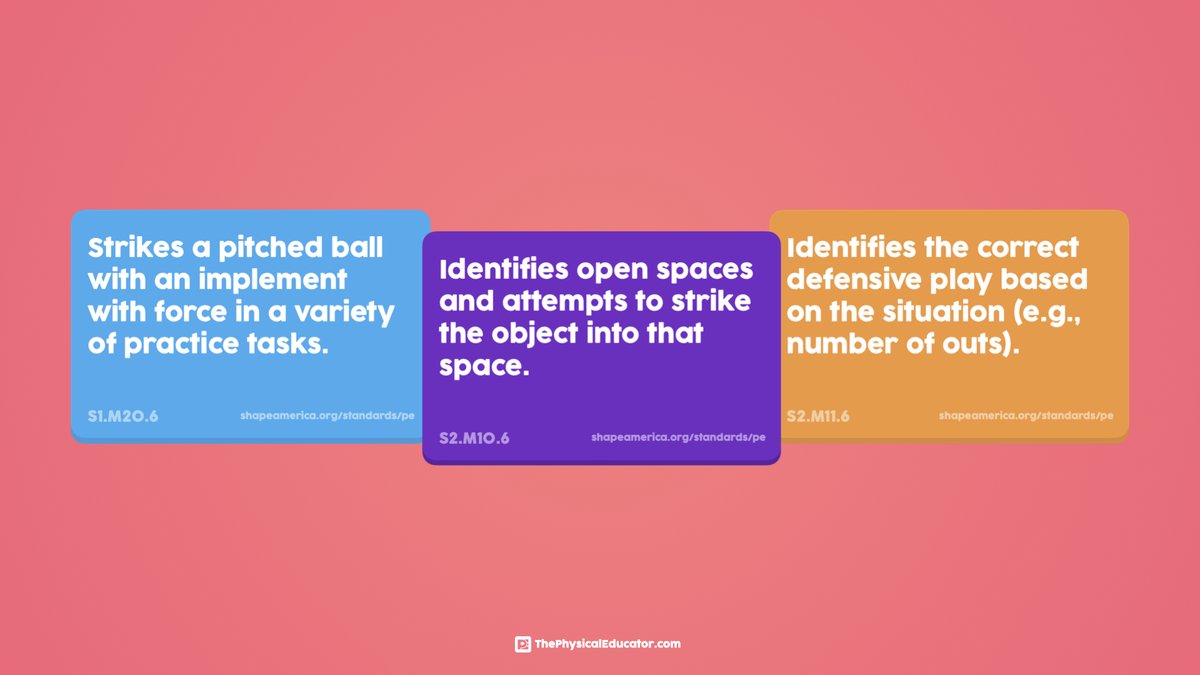
🤝 With the start of the new school year, a lot of educators are talking about building community within their classrooms.
🏁 Where do you start? One high-leverage area you can focus on is fostering a sense of belonging.
🧵 Here's a thread to help get you started! #physed
🏁 Where do you start? One high-leverage area you can focus on is fostering a sense of belonging.
🧵 Here's a thread to help get you started! #physed

📗 First off, what is belonging?
✨ It's the feeling that you are an important part of the systems you live in.
🧠 Belonging is a fundamental psychological need that is baked into our biology as human beings. When that need is fulfilled, we experience a whole range of benefits.
✨ It's the feeling that you are an important part of the systems you live in.
🧠 Belonging is a fundamental psychological need that is baked into our biology as human beings. When that need is fulfilled, we experience a whole range of benefits.

🧩 What are the components of belonging?
4️⃣ According to @drkellyallen and colleagues, belonging is influenced by four interrelated components:
✅ Competencies for belonging.
🎟 Opportunities for belonging.
⚡️ Motivations for belonging.
👀 Perceptions of belonging.
4️⃣ According to @drkellyallen and colleagues, belonging is influenced by four interrelated components:
✅ Competencies for belonging.
🎟 Opportunities for belonging.
⚡️ Motivations for belonging.
👀 Perceptions of belonging.

🍎 What about school belonging?
👉 School belonging is "the extent to which students feel personally accepted, respected, included, & supported by others in the school social environment" (Goodenow & Grady).
🧲 Several factors, at various levels, influence school belonging.
👉 School belonging is "the extent to which students feel personally accepted, respected, included, & supported by others in the school social environment" (Goodenow & Grady).
🧲 Several factors, at various levels, influence school belonging.

📈 Looking to increase your students' sense of school belonging? Here's where you'll get the most bang for your buck!
🔍 A 2018 meta-analysis study examined the effect of 10 themes relevant to school belonging. The effect size measured helps us know where to focus as teachers.
🔍 A 2018 meta-analysis study examined the effect of 10 themes relevant to school belonging. The effect size measured helps us know where to focus as teachers.

🧑🏫 Teacher support (students feel connected to their teacher) has the strongest effect on school belonging.
👇 Strategies:
✅ Support student autonomy
✅ Hold high expectations for all
✅ Be attentive
✅ Be available (personal+academic support)
✅ Be caring, friendly, & fair.
👇 Strategies:
✅ Support student autonomy
✅ Hold high expectations for all
✅ Be attentive
✅ Be available (personal+academic support)
✅ Be caring, friendly, & fair.
🎓 This thread was based on a post I'm writing as part of my "Decoding Danielson" series over at @joinphysedu.
👀 The series is an exploration of the revised Framework For Teaching through a #physed lens.
👉 Hungry for more? Come join us on campus! thephysicaleducator.com/membership/
👀 The series is an exploration of the revised Framework For Teaching through a #physed lens.
👉 Hungry for more? Come join us on campus! thephysicaleducator.com/membership/
• • •
Missing some Tweet in this thread? You can try to
force a refresh









